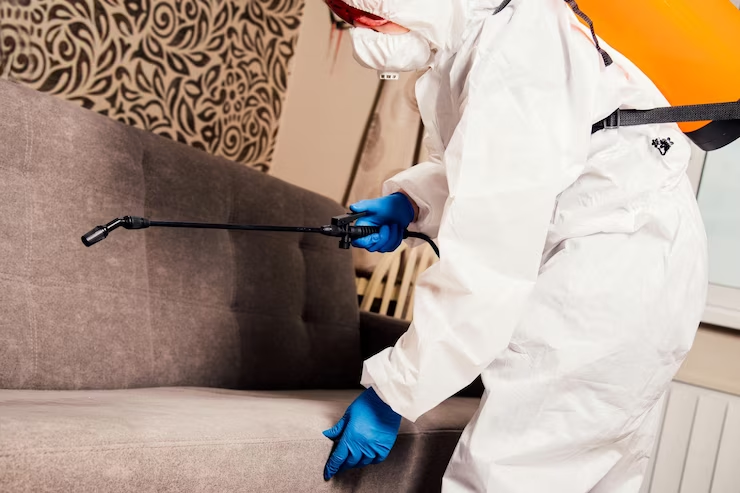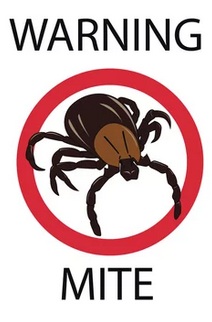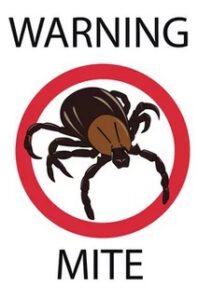Preventing pest infestations can be as simple as removing food sources and closing off entry points. Clutter also provides hiding places for pests.
Physical or mechanical pest control involves traps, bait stations, and netting to capture or kill rodents and other vertebrates. Other mechanical methods include sticky barriers, heat killing (for stored product pests), and flooding (for ground pests). Contact Pest Control Euless TX now!
Preventive pest control is the best way to keep infestations under control. It can reduce the cost and stress of repairing pest damage and it minimizes health hazards and nuisance problems from unwelcome visitors. Preventative pest control methods include inspecting your home, property and yard regularly for signs of pests. Using cleaning practices that don’t invite pests and taking steps to eliminate nesting areas, food sources and water supplies for them can stop an invasion before it starts.
Physical pest control includes the use of traps, barriers, fences and other devices that physically separate people from pests. It can also involve destroying the pests’ habitat or food source to make an area unsuitable for them.
Chemical pest control uses poisons to kill or repel pests. It can be a more challenging form of pest control than other methods because it requires careful selection and application of products that are least hazardous to humans, pets and wildlife. Chemicals are most effective when used in combination with other methods of pest control.
Some pests are more of a nuisance than a danger and may not require control. Others eat away at the yield of crops, destroy valuable materials or cause other serious harm. A few pests are considered invasive and must be eliminated, such as the Mediterranean fruit fly, gypsy moth and fire ants.
Eradication is rarely the goal in outdoor pest situations, but it is sometimes possible. In enclosed spaces, like homes, schools and office buildings, eradication is more likely to be an objective, such as when a new insect threatens the integrity of structures or public health.
Natural forces affect all organisms, including pests. Climate, natural enemies, natural barriers, and food and water availability can all have a significant impact on pest populations. Farmers often use companion plants that attract natural predators of pests to help prevent or eradicate them (see EDN 132). Pesticides should be selected carefully to ensure they are safe for beneficial insects and the environment. Always read and follow the instructions on product labels. Avoid applying more pesticide than recommended, as this can be dangerous and does not improve results.
Suppression
In pest control, suppression means reducing a pest population to an acceptable level. It involves implementing prevention and other strategies that interfere with pest development, growth, feeding or reproduction. Control methods may include planting disease-free seed and transplants, scheduling irrigation to avoid conditions favorable to weeds or diseases, cleaning harvesting and tillage equipment between fields, eliminating alternate hosts for pests, and applying cultural practices that reduce a pest’s food or shelter supply.
Suppression is also possible with biocontrol agents. These are natural enemies (predators, parasites, or pathogens) that when released cause varying levels of injury to target pests. Examples are nematodes that kill the eggs and larvae of certain insect pests, or ladybugs that eat aphids and other small pests in their early stages of development. Some biological control agents are restricted at international, national, regional or state levels, so be sure to know the legal status of these controls before attempting to use them.
Other methods of suppressing a pest population include releasing sterile insects that cannot breed and thus do not contribute to the future population; removing limiting factors for the pests, such as a lack of host plants or water; or manipulating the pest mating or host-finding behavior by using pheromones (synthetic pheromones that mimic the attractants used by male pests). A number of physical barriers can restrict the movement of some pest populations, including mountains, large bodies of water, or other terrain features.
When developing a pest control strategy, it is important to evaluate the benefits and risks of each tactic or combination of tactics. It is equally important to use each control method correctly and observe local, state and federal regulations that apply. The New Mexico State University Cooperative Extension Service has Specialists, County Agents and other staff members who can provide valuable information about pests and their control. Contact your county office for more assistance. A good resource is the UF/IFAS Basic Pesticide Training manual, SM-59.
Eradication
Pest control involves the elimination or management of unwanted creatures, such as rodents, cockroaches, bed bugs and poisonous spiders. These creatures can cause damage to property and health issues for people. Pest control can be done through exclusion, repulsion, physical removal and chemical means. It can also prevent the spread of diseases and the destruction of natural resources. It is a crucial part of property management. Pest control can be used in residential, commercial and industrial buildings. It can also help eliminate the structural damage that pests cause. For example, termites can cause over $5 billion in property damage in the US annually. They can eat into the wood, plaster and insulation of homes and buildings. Pests can also damage the environment by spreading weeds and destroying trees and plants. Pest control helps maintain the structural condition of properties and promotes a healthy environment.
Eradication is a rare goal in outdoor pest situations, where the usual goals are prevention and suppression. However, it is the only possible way to eradicate some invasive foreign species, such as Mediterranean fruit fly, gypsy moth and fire ants. Eradication is a more common goal in indoor areas, where the pests are less mobile and easier to control.
The failure of eradication attempts is common, with many factors contributing to the downfall of an eradication effort. A decline in political or social support is often a significant factor, especially when the eradication program is perceived as harsh or restrictive. The length of an eradication program may also contribute to its downfall, as it allows the target population time to develop resistance to treatment (e.g., the development of insecticide resistance to DDT in Aedes aegypti in the US and Aedes albopictus in Italy).
Using chemicals for pest control can be a costly and dangerous endeavor. It is important to understand how the chemicals work, what they are made of and their effect on the environment. Additionally, it is important to read and follow the label instructions on the pesticide. This will ensure that you are using the correct dosage and reducing any potential risks associated with the pesticide.
Monitoring
Monitoring is the process of regularly searching for, identifying, and assessing pests in order to determine their presence, impact, and control potential. It is a crucial component of integrated pest management (IPM) programs. The scouting or monitoring techniques used in IPM differ depending on the type of pest complex and crop, but may include sticky traps, visual inspections, plant pathology, and pheromones.
IPM programs set action thresholds, which are the levels at which pest populations or environmental conditions indicate that pest control is required. Depending on the specific situation, a pest may be considered a continuous pest, sporadic pest, or potential pest. Continuous pests are those that appear at regular intervals and require constant attention and preventive controls. Sporadic and potential pests appear infrequently but could become a problem if not controlled. Once the threshold has been reached, IPM programs employ suppression tactics to bring the pest population back to an acceptable level before attempting prevention again.
When it comes to scouting, the frequency will depend on the type of crop and its stage in the growing cycle. It is important to monitor for both pests and injury as IPM programs rely on a combination of preventive and control tactics, including the use of natural enemies. Field scouting must be ongoing so that pests are detected at the first signs of damage or insect population build-up.
While IPM strategies vary, they are typically based on the three broad categories of controlling pests: prevention, suppression, and eradication. Prevention is the best method of pest control, but it can be difficult to achieve with some pests due to their ability to adapt and re-infest. Prevention includes preventive tactics, such as maintaining sanitation and good hygiene, that reduce the food or water supply, limit their shelter, or disrupt mating, egg laying, or feeding habits.
For example, a facility that made cookies and crackers started seeing German cockroaches in their employee break room. By using pheromone traps in the key areas of the warehouse, they quickly found out that the issue was old food and conducted a thorough clean. This allowed them to take quick and targeted action and prevent the problem from reoccurring, saving time and money on expensive pest treatments.


